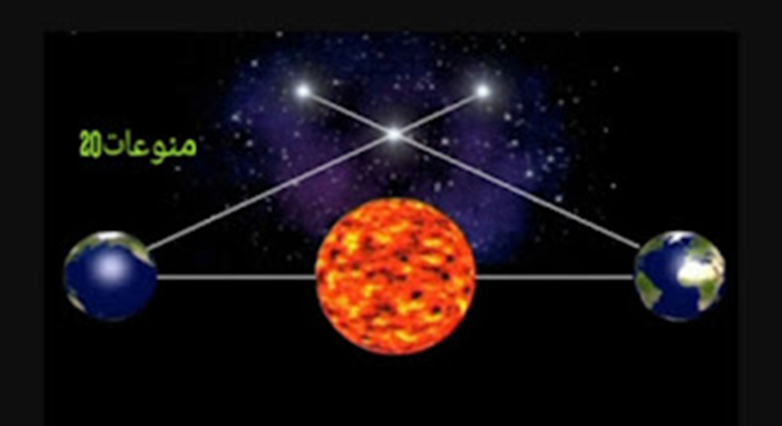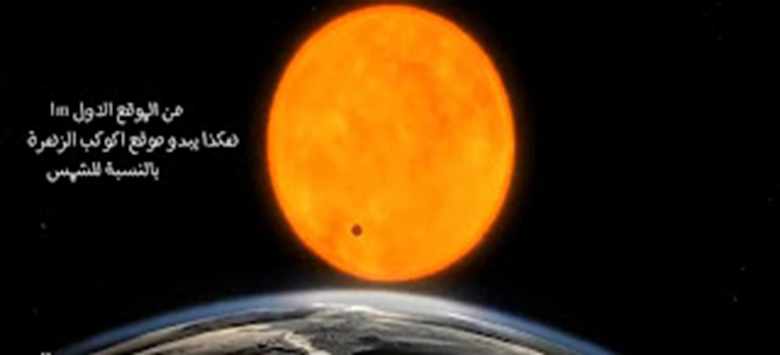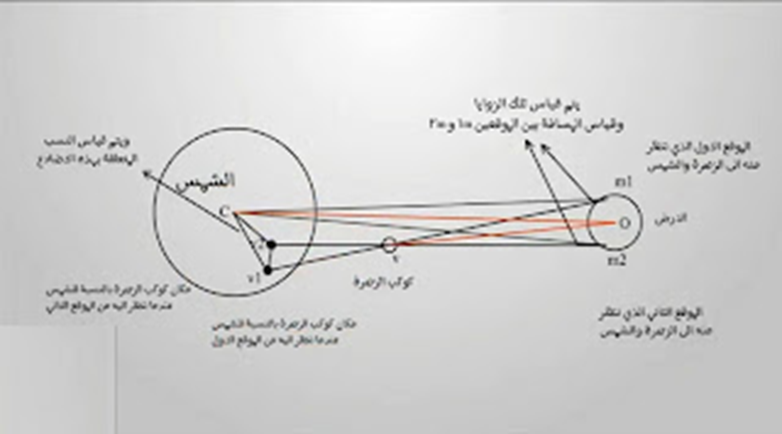? How do we know the distance to the sun

? How do we know the distance to the sun
? How far is it to the sun
The question is simple, and the correct answer to it has been relied upon by all astronomers for more than two thousand years! The distance from the Earth to the Sun is known as (an astronomical unit), and scientists use it as a standard unit to measure the distances between the objects of the universe.
Before arriving at the measurement of the average distance between the Earth and the sun in its orbit, astronomers were not able to calculate the distances between stars and planets, as well as the distances between each other, and the reason is because the astronomical units of measurement were few and not suitable for huge distances. But by calculating the distance between our planet Earth and the Sun, this led to the emergence of the (astronomical unit), which is used today to measure the distances between the planets in the solar system.
ancient greek astronomy
The ancient Greeks were among the most prominent astronomers in the history of astronomical observation and among those who tried to visualize a model of the shape of the universe, and from a period extending before the first telescopes were made..
They spotted the large moon in the horizon of the sky, and imagined that it is close to us on Earth! During the solar eclipse, both the sun and the moon appear to be the same size, the sun appears brighter and brighter, and they found that this confirms that the sun is the largest, but it is located at a very far distance from the nearby moon.
They noticed that other planets appear larger than all the stars and move faster than the big stars as well, and this led them to determine the nearby bodies by their speed in their orbit..
Engineering opens its doors
During the period of the recovery of mathematics and engineering applications, the first and precisely known astronomical distance was the distance between the Earth and the Moon.
This was done in the middle of the second century AD. The Greek astronomer (Abrakhsh) was using an old and well-known astronomical method (differentiation of parallax) and this method is very simple as follows: We, of course, if we look at a number of objects so that our position is from two different angles of vision, what we notice is that our vision Close objects show a clearer change than objects far from us.
star parallax

We can do this easily by holding your finger at the length of your arm and then closing one eye followed by the other. Notice how your finger moves more than those things in the background “behind your
? finger”
! This is how the look differs
In the principles of geometry, when we know the size of two angles in a triangle, and the length of one of the sides, you can then simply use geometry to find the length of the rest of the other sides of the triangle.
In the experiment of (Abrakhsh) he reached to measure the distance between two distant villages by observing the moon in the sky of both villages.
The astronomer (Aristarchus of Samos)
This Greek scientist realized that when the moon is half lit, it is in this phase or position that it forms a right triangle with the position of the earth and the position of the sun.
The scientist knew the distance between the earth and the moon, all he needed was to know the value of the angle between the sun and the moon, to be able to determine the correct distance to the sun, his simple scientific explanation was smart, but his astronomical observations at the time were insufficient!
Aristarchus used his eyes to observe, and estimated the value of this angle at about 87 degrees, and his estimate was close to the correct estimate. After more than twenty centuries of time, the same method was used by Aristarchus and his astronomical observations, and with better instruments and observations, the results came out close to the correct distance.
? How can we improve results
The method called (parallax) or (stellar parallax) was the first and only method for measuring distance.
But that method (different view) with respect to the sun, was more difficult than the one used with the moon..
? What can we do
Venus transits in front of the sun
The nearby planet Venus influences all outcomes.
During the eighteenth century, our understanding of nature and its laws developed better and the foundations of physics began to emerge. Kepler and Newton explained that the distances between the celestial bodies and the planets are related to knowing one of them, and therefore we know them all in the same way.
The key to that, was the transit to Venus in front of the sun.
During the transit to Venus, some planets cross in front of the sun disk, and this transit is seen from the surface of the Earth from several different observational locations.
Scientists (James Gerogory) and (Edmund Haley) estimated that the distance to Venus and the Sun can be determined in this way.

It seems a simple method, but there are some odds against success.. Venus transits in front of the sun is a very rare event, and Halley realized over time that this method was correct, but that he might not be able to do it himself, and he wrote the instructions and specific instructions for carrying out the experiment for the astronomer.
To ensure accuracy in the calculations, two things are needed:
1_ Measuring the transit time of Venus with an accuracy of less than a second.
2_ Distancing the monitoring sites or people watching to cross as much as possible.

And to ensure that the weather and clouds were not affected, the locations of the observers had to be distributed all over the globe, and all over the world.
This task was very difficult at this time, because traveling across continents at the time used to take many years, not like we are today.
global efforts
With these difficulties, astronomers in France and England decided that during 1761 AD they would be able to observe the transit of Venus and carry out the experiment.
Not all of the old observations were accurate, but the scientists were able to combine their recent data with successive measurements collected during the eight years of the intended planetary transit.
The French astronomer (Grome Laland) was able to collect observational data and an approximate calculation of the distance from the Earth to the Sun: one hundred and fifty-three million kilometers (ninety-six miles), and his results were close to the actual value (ninety-three miles).

The observation and observation made by the Greek (Aristarchus) with his humble tools, during the transit period of the planet Venus in front of the sun, to increase our knowledge about the nature of the distance from the Earth to the sun and called (astronomical unit) and to use the same method to try to understand the vast universe and determine the distances between objects Cosmic.
Among the implicit facts known to any amateur observer is the widening of the Earth’s orbit, and the use of the change in the Earth’s position in its orbit around the sun with the passage of six months, in observing the stars and thus knowing their distance,
We can use parallax to measure the distance to the rest of the stars by preparing external observations spaced in six months, that is when the Earth departs to the other side of the sun,
This revealed to us the infinitely expanding universe! ..
This is in your hands to implement it yourself and contemplate an aspect of the universe
universe and space Science cosmology
Source: websites

